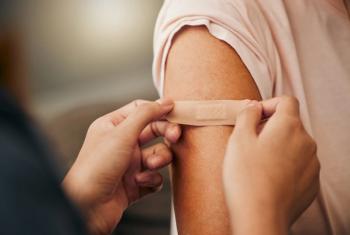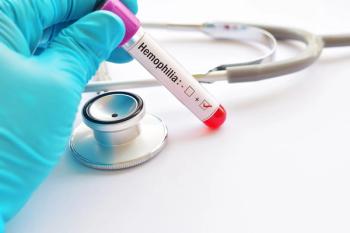
- July 2024
- Volume 40
- Issue 06
Here’s a doggone good way to minimize pain during needlesticks
When it comes to easing pain from a needlestick, pairing a dog with the human administering the needlestick was more successful than the human alone, according to results of a study conducted in a hematology oncology clinic.
When it comes to easing pain from a needlestick, pairing a dog with the human administering the needlestick was more successful than the human alone, according to results of a study conducted in a hematology oncology clinic. The 285 children and adolescents in the study, divided into intervention and control groups, were 5- to 17-year-olds who required venipuncture, intravenous placement, or a port procedure. Participants in the intervention group were invited to engage with a facility dog (a certified service dog trained to work with clinical handlers) physically and verbally during a procedure while a certified child life specialist (CCLS) supported relaxation, distraction, mastery, and play. Those in the control group received the same CCLS support, but a facility dog was not present during
the procedure.
After the procedures, patients and their caregivers reported on procedural pain and anxiety using the Children’s Anxiety and Pain Scale. Both patients and parents in the intervention group reported lower pain and anxiety than did their peers in the control group, but the difference was statistically significant only with regard to patient-reported pain. Compared with the control group, more patients in the intervention group required only 1 needlestick attempt to complete the procedure successfully. Finally, compared with the intervention group, the control group was more likely to require that more than 1 staff member be present.
Thoughts from Dr. Farber
I’m a big fan of reducing pain and using low-tech techniques. This does both. I assume the service dog does not require inordinate training; it needs to be calm, not jump on children, and enjoy being with people. Of course, initially one would need to make sure the treated child was not afraid of dogs.
Reference
Spikestein A, Musante J, Huang HH, et al. Impact of facility dog and certified child life specialist dyad on children’s pain and anxiety during needlestick procedures in a pediatric hematology oncology clinic setting. J Pediatr Hematol Oncol. 2024;46(1):51-56. doi:10.1097/MPH.0000000000002785
Articles in this issue
over 1 year ago
Obesity in the adolescent and young adult populationsover 1 year ago
Are PUFAs effective for ADHD?over 1 year ago
A 9-year-old boy presents with neck massover 1 year ago
What to expect in the July issue of Contemporary Pediatricsover 1 year ago
Hypoventilation is common in Prader-Willi syndromeover 1 year ago
Girl, 8 months, presents with red, painful cheeksover 1 year ago
Top tips for water safetyNewsletter
Access practical, evidence-based guidance to support better care for our youngest patients. Join our email list for the latest clinical updates.










